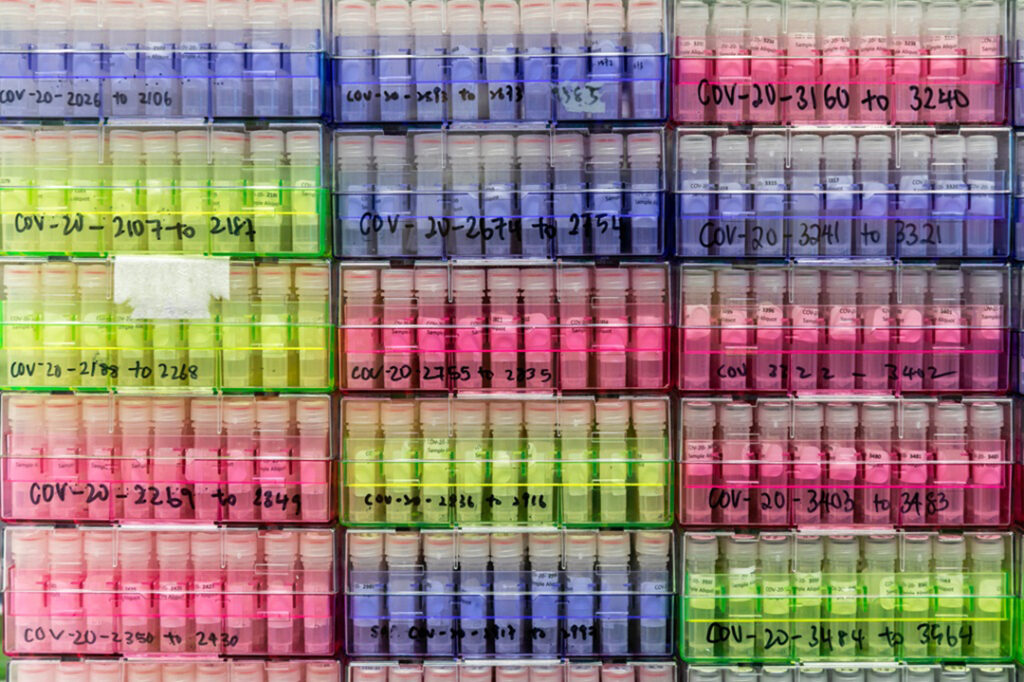ADF STAFF
Since scientists identified the omicron variant of SARS-CoV-2 in southern Africa in late 2021, it has changed into an assortment of mutated subvariants that now are driving new waves of COVID-19 around the globe.
Experts say this is how viruses adapt.
“Welcome to the #Omicron Olympics, where a dazzling array of fit new strains race against each other for global dominance,” epidemiologist and biosecurity expert Raina MacIntyre tweeted on October 11.
Driven by two omicron subvariants, South Africa’s fifth wave of COVID-19 peaked around mid-May. Mutations made the subvariants slightly more transmissible and better at evading immunity.
Virologist Penny Moore, whose University of the Witwatersrand team studies COVID-19 variants, saw it firsthand in Johannesburg.
“We’re definitely entering a resurgence in South Africa, and it seems to be driven entirely by BA.4 and BA.5,” she told Nature magazine. “We’re seeing crazy numbers of infections. Just within my lab, I have six people off sick.”
On October 5, World Health Organization (WHO) Director-General Dr. Tedros Adhanom Ghebreyesus gave an update on the virus’ spread.
“Several countries in Europe are now reporting an increase in COVID-19 cases, hospitalizations and deaths,” he said during a weekly briefing. “Most countries no longer have measures in place to limit the spread of the virus.
“We expect reported cases of COVID-19 to increase.”
While omicron remains the dominant variant globally, he said the WHO and its partners were tracking more than 300 subvariants.
“But surveillance, testing and sequencing remain weak globally, which makes tracking this virus like chasing shadows,” he said.
The most common strain of omicron, BA.5, has begun giving way to new sublineages.
Scientists found BA.4.6, which originated from the BA.4 subvariant, in roughly 12% of new cases worldwide in October — double the amount found in mid-August.
Mutations in BA.5 have given rise to the BQ.1 and BQ.1.1 strains, which accounted for almost 6% of cases in October. Laboratories found another subvariant, BF.7, in about 5% of recent cases.
There are so many strains going around in different parts of the world, some scientists are giving them nicknames like Aeterna, Gryphon, Minotaur, Chiron, Typhon and Cerberus to help with the numerical clutter.
Experts warn that these new strains could spark new waves of infections. But they say they need more real-time data.
Around the world, countries have scaled back COVID-19 testing. Relaxed mask mandates and changes in the behavior of people who already were weary of public health restrictions may be responsible for the recent rise in cases.
The world has seen more than 624 million confirmed cases of COVID-19 and more than 6.5 million deaths, according to WHO statistics as of October 23.
Some experts such as Dr. Eric Topol, a professor of molecular medicine at Scripps Research, are warning that the pandemic is reaching a crossroads.
“There have been times when different variants were on the move in different parts of the world, like the gamma variant in South America, and beta in South Africa,” he told Fortune magazine.
“But this is different because now we have variants with extreme levels of immune evasion, and in any given country, potentially a few that could be in play at the same time.”

